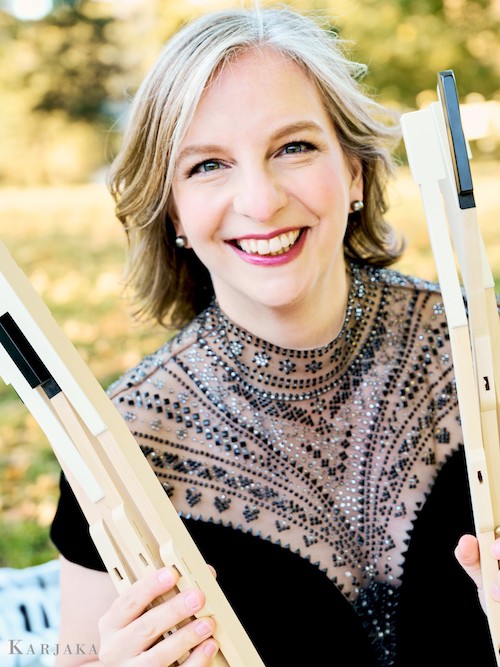Orli Shaham brings captivating Chopin to Utah Symphony

Another week, another guest conductor at Abravanel Hall.
Case Scaglione, a native Texan who currently serves as chief conductor of the Wuttemberg Chamber Orchestra in Germany and the Orchestre National de France, made a somewhat uneven debut with the Utah Symphony Friday night.
Scaglione came through effectively on the climactic moments of each piece, including several during pianist Orli Shaham’s engaging rendition of Chopin’s Piano Concerto No. 2, but the connective tissue between these moments lacked coherence and lucidity.
The concert opened with the “Prelude and Liebestod” from Wagner’s Tristan and Isolde, which begins with a series of short, dramatic string and woodwind passages punctuated by long rests. Scaglione’s phrasing of these passages was clear and conscientious, but it lacked warmth and a sense of anticipation, making the pauses ponderous rather than fraught with meaning. While the strings did shimmer belatedly in the “Liebestod” section, they sounded dry through much of the piece, and the orchestra sounded heavy. At times, the musicians seemed to have difficulty following Scaglione’s beat; every crescendo seemed to be charted with a wide baton gesture. However, he and the orchestra found cohesion for the piece’s climactic finale, where he achieved a full sound and greater surging momentum.
Scaglione and the orchestra kicked off the Chopin concerto with a strong, well-phrased tutti, which built to Shaham’s emphatic entrance. Throughout the piece, Shaham displayed flawless technique and clear, refined phrasing, accentuated by an engaging lilt and judicious use of rubato. Her only weakness was an occasional tendency to play certain passages in a marcato where a more varied tone might have better served the phrase. Such was the case in her first movement entrance, where the tone was a little harsh, but she found a more mellow tone in subsequent solo passages, which were elegantly done.
On the whole, Shaham’s performance was captivating and as notable for her interaction with the orchestra as for her solo playing. In fact, the musicians appeared to watch her as much as they watched Scaglione, which created an intimacy between them as they traded passages. Throughout, she seemed to cue the musicians with her head and body, perhaps in an attempt to make up for the lack of coordination from the podium. (No doubt some would have preferred David Robertson, Shaham’s husband, who conducted the orchestra successfully just last week.)
This was particularly true in the slow movement, where the orchestra underscores the piano’s long, heavily ornamented entrance. Shaham’s poetic interpretation featured a very free tempo, but the orchestra stayed with her and the partnership grew in ardor through the movement.
Shaham was at her best in the playful third movement, which showcased both her technical prowess and her musicality. The movement begins with a whirling waltz theme, which unwinds joyfully into a mirror image of that theme in the relative major. Shaham’s energy was infectious and echoed throughout the orchestra, and her precise scales and runs dazzled.
As an encore, she played Alexander Siloti’s melancholy Prelude in B minor a slightly romanticized arrangement of Bach’s Prelude in E Minor. Shaham took liberties with the tempo, yet the effect was mesmerizing, particularly the ostinato figure in the right hand, which she played with impressive control.
The concert’s second half was devoted to Dvořák’s towering Symphony No. 7, which, like the Wagner, featured moments of spectacular sound but lacked an overall dramatic arc. Scaglione gave the first movement’s severe beginning a rhythmic drive and intensity, and he handled the subsequent transition to a major key well. The lighter, dancing moments also came through well, but the moody softer passages were a bit cold and rigid.
This rigidity carried into the second movement, where the hymn-like opening passage lacked clear phrasing and direction as did the contrapuntal development passages later in the piece. Scaglione did shine, however, when the theme was repeated rapturously and triumphantly through the whole orchestra, making a genuine connection with the music (and the audience).
Scaglione’s direction was most convincing in the latter half of the symphony. He gave the third movement’s melody a lovely lilt, and built consistently through its thematic development. He also mastered the resolute mood of the fourth movement, carefully phrasing the Czech folk melody on which the main theme is based, and building it to an intense, rapturous climax.
The program will be repeated 7:30 p.m. Saturday at Abravanel Hall. usuo.org